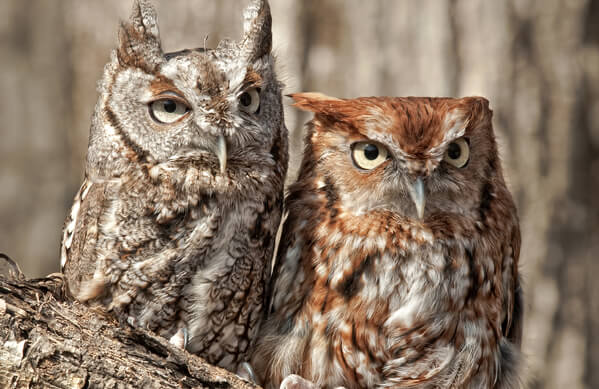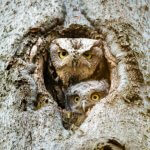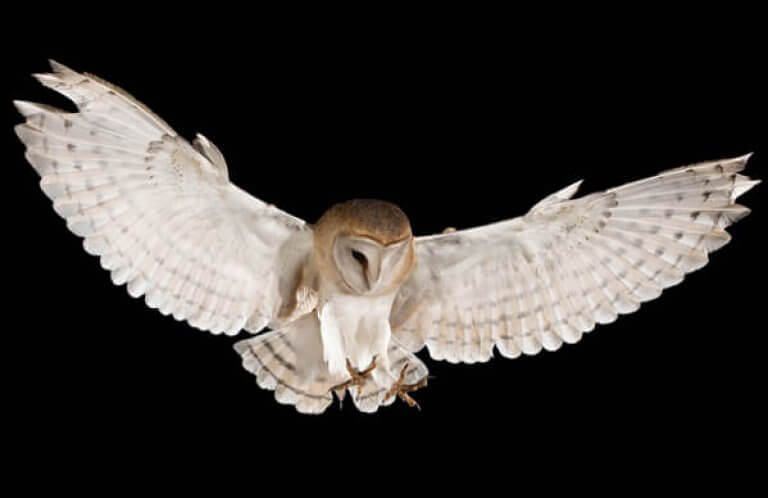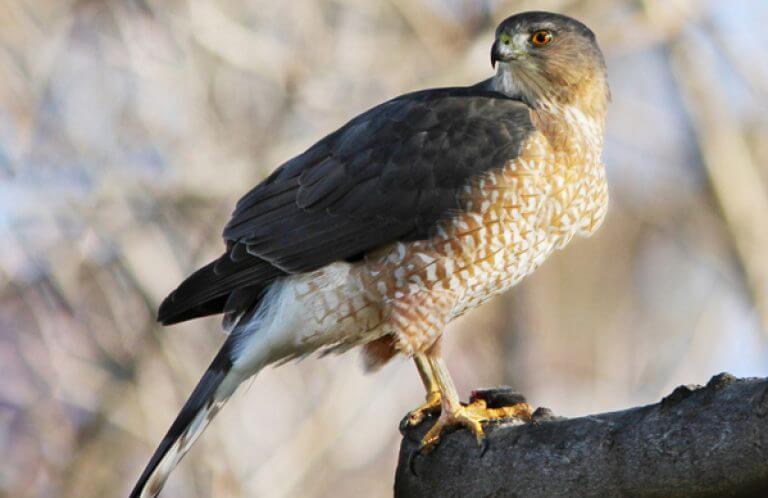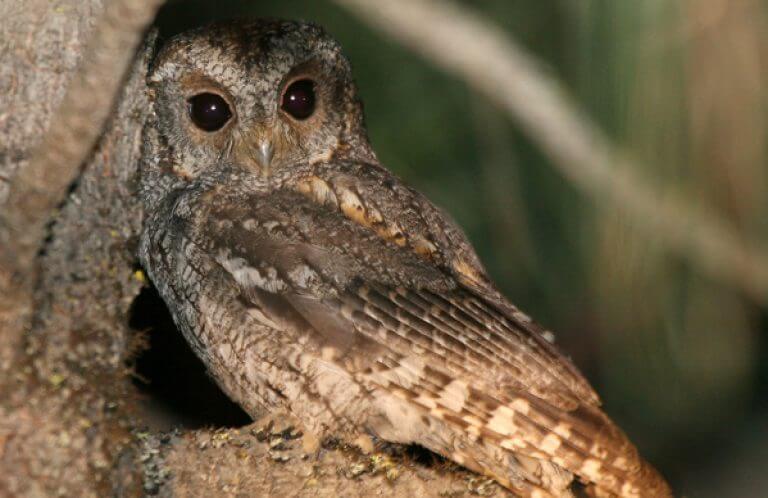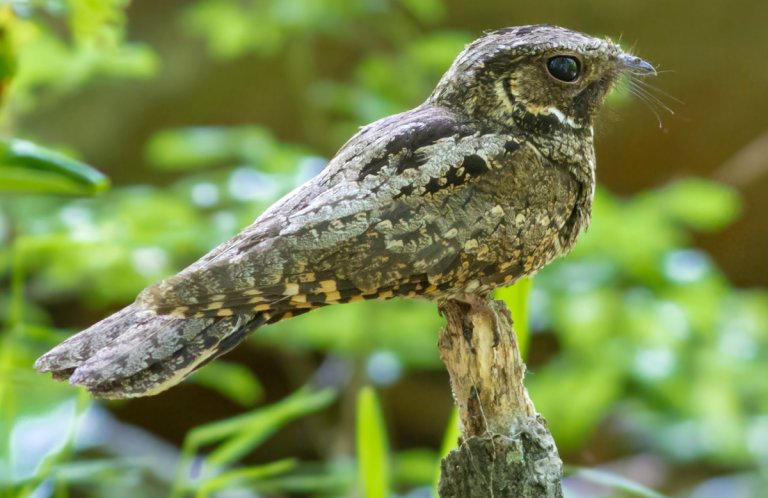About the Eastern Screech-Owl
The little Eastern Screech-Owl lives alongside people in many suburban and even urban settings throughout the eastern United States. Although widespread, this nocturnal bird, like the Barn Owl and Eastern Whip-poor-will, often goes unseen and is best detected by its vocalizations. (Scroll down to hear its voice.)
Songs and Sounds
The Eastern Screech-Owl's vocalizations include a distinctive, whinny-like call and a low-pitched trill, given during nesting season to maintain pair and family bonds, to attract mates, and during aggressive interactions between individuals. Both males and females vocalize, although males tend to be more noisy.
If you've heard these odd sounds, you may have an Eastern Screech-Owl as a neighbor!
1. “Call of Eastern Screech-Owl ”0:36
2. “Song of Eastern Screech-Owl” 0:17
(Audio: Call recorded in Edgartown, Mass. by Tim Spahr, XC286959. Accessible at www.xeno-canto.org/286959. Song recorded in Atsion, NJ by Don Jones, XC1160. Accessible at www.xeno-canto.org/1160.)
Breeding and Feeding
Elaborate Courtships
Eastern Screech-Owls nest in tree cavities, either naturally formed or old woodpecker holes. They will also use nest boxes and may even nest behind loose boards on abandoned buildings or barns. Pairs often reuse nest sites in consecutive years.
Like the Short-eared Owl, the Eastern Screech-Owl has an elaborate courtship ritual. A courting male approaches a female while calling, then bobs and swivels his head and entire body, even slowly winking his eyes as part of this performance. If the female accepts him, the pair will touch bills and preen each other. These owls mate for life, although they will seek a new mate if one disappears.
Unconventional Nest Helpers
During nesting, the male brings food while the female broods the eggs and young; like the male Northern Saw-whet Owl, it often caches several days' worth of food for the nestlings. The Eastern Screech-Owl's varied diet includes small birds and mammals, reptiles, insects, crayfish, and earthworms.
This eclectic diet sometimes includes worm-like reptiles called blind snakes, which the adult owl brings to the nest alive. The owl chicks eat some of them, but other blind snakes escape being a meal by burrowing beneath the wood chips, pellets, and other debris on the nest cavity's floor. The surviving blind snakes dine on insect larvae that would otherwise parasitize the owl nestlings. A recent study showed that screech-owl chicks grew faster and healthier in nests kept vermin-free by "helper" blind snakes.
Like other owls, Eastern Screech-Owls regurgitate pellets that contain indigestible fur and bones; finding these pellets beneath a tree may be one clue to an owl's presence.

Region and Range
Life in the Suburbs

Eastern Screech-Owls are permanent residents in a wide variety of habitats, particularly wooded suburban neighborhoods and parks, riparian areas, orchards, and woodlands near marshes, meadows, and fields. They tend to avoid dense forests, habitats frequently inhabited by Great Horned Owls, which readily prey upon the smaller screech-owls.
Five subspecies of Eastern Screech-Owl are recognized, varying in color, size, and voice. This owl occurs in rufous and gray morphs, and, rarely, in a brownish plumage. Birds of different color phases often mate together. Male and female plumages are alike, but as in many other birds of prey, including the Flammulated Owl and Cooper's Hawk, the female is larger.
Conservation
Conserving a Common Owl
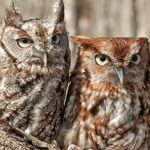
Help support ABC's conservation mission!
Although the Eastern Screech-Owl is still considered a common species, Partners in Flight data show a decline in populations in some areas. This owl is often the victim of collisions with glass and vehicles. Screech-owls that nest in suburbs and orchards are vulnerable to pesticides, and like so many other birds, they are affected by habitat loss.
Get Involved
Policies enacted by the U.S. Congress and federal agencies, such as the U.S. Fish and Wildlife Service, have a huge impact on America's birds. You can help shape these rules for the better by telling lawmakers to prioritize birds, bird habitat, and bird-friendly measures. To get started, visit ABC's Action Center.
Living a bird-friendly life can have an immediate impact on the birds around you. Doing so can be as easy as adding native plants to your garden, avoiding pesticides, and keeping cats indoors. To learn more, visit our Bird-Friendly Life page.
American Bird Conservancy and our Migratory Bird Joint Venture partners have improved conservation management on more than 6.4 million acres of U.S. bird habitat — an area larger than the state of Maryland — over the last ten years. This is a monumental undertaking, requiring the support of many, and you can help by making a gift today.





































